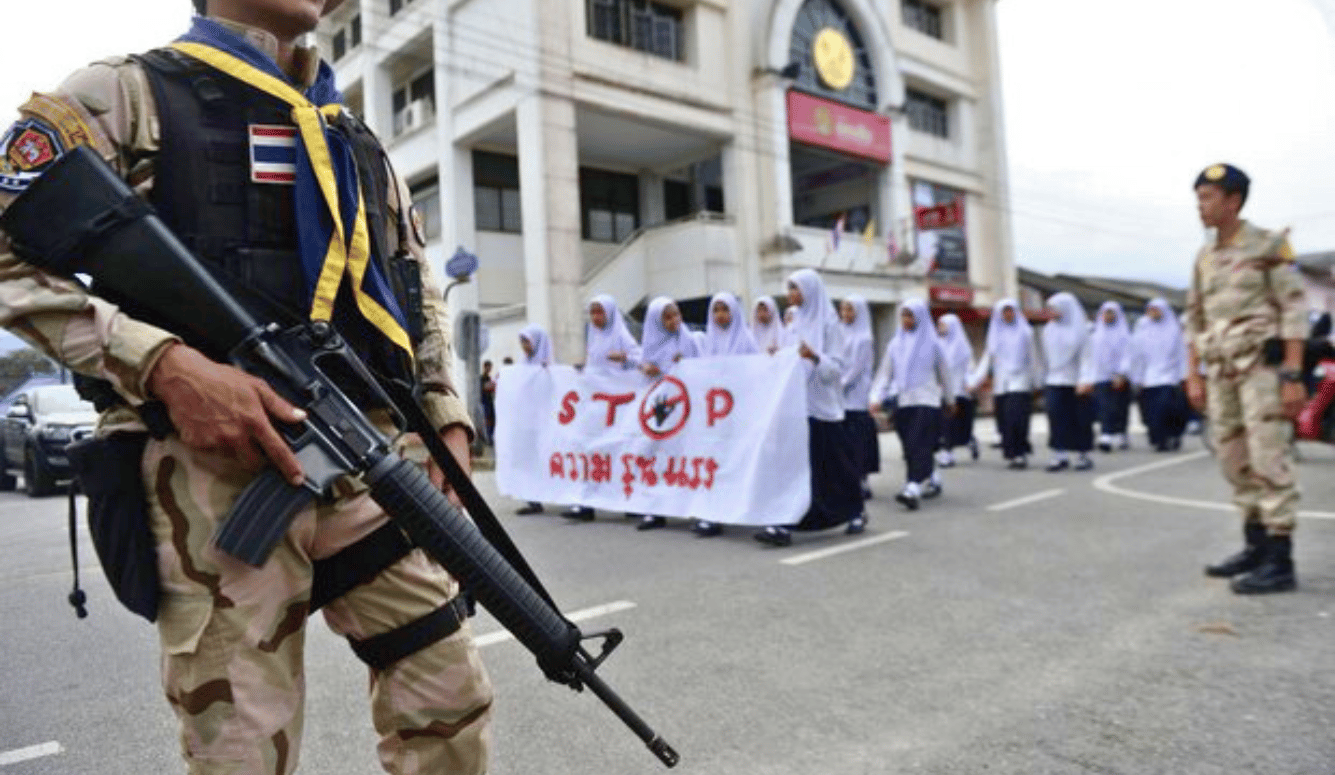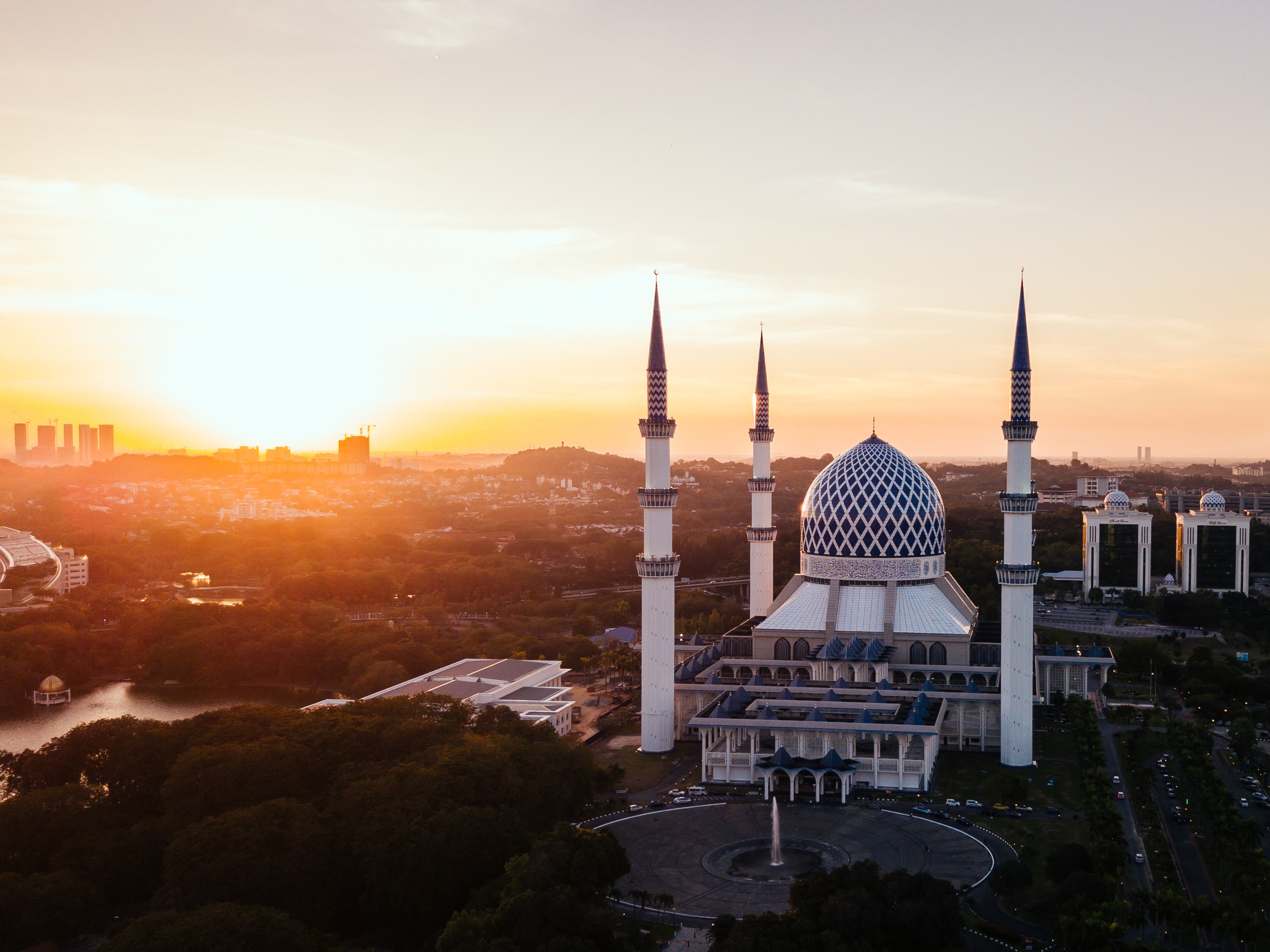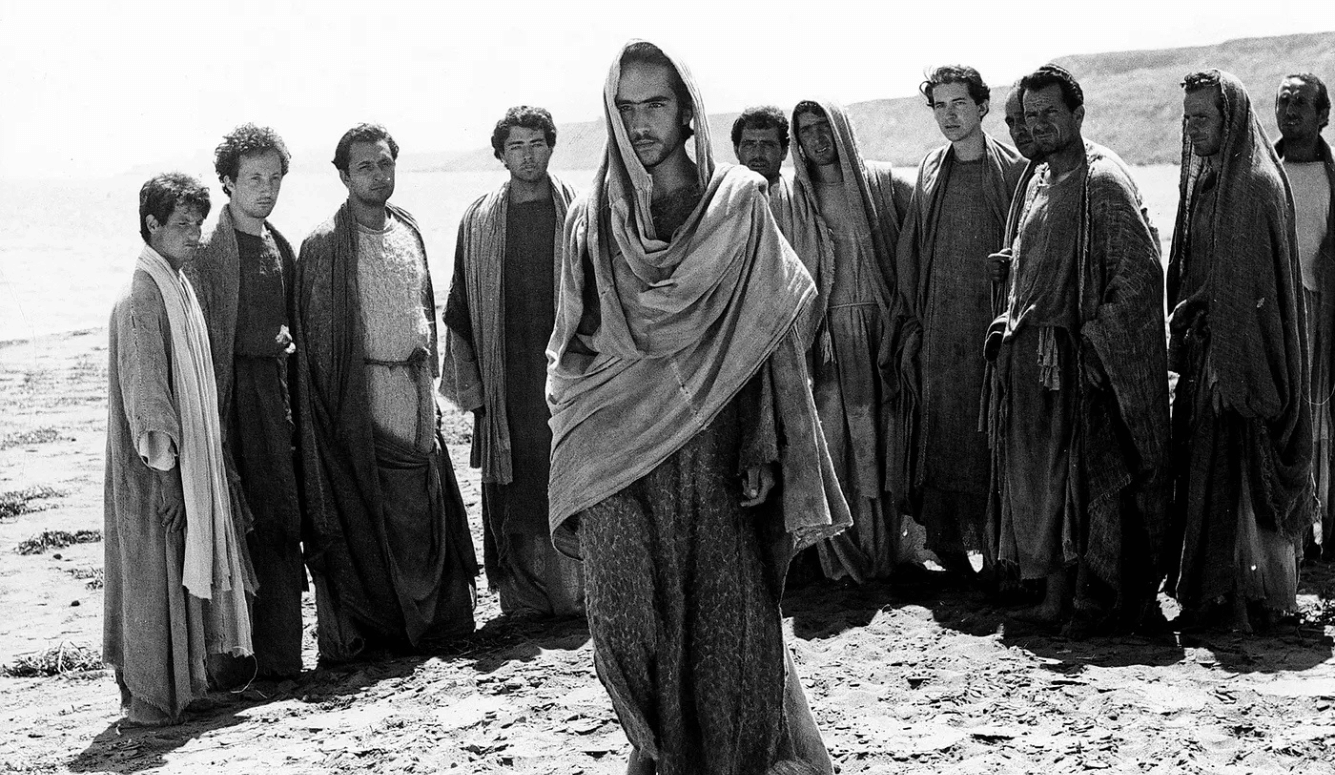Malaysia
Thai Colonialism in the Malay World
A spate of deadly shootings in Thailand is just the latest episode in a centuries-long struggle between Thais and Malays.

Over the past few months, a spate of deadly bombings and shootings have taken place in southern Thailand in one of Asia’s lesser-known insurgencies. The latest hostilities are part of a longer history of ambivalent relations between Thailand’s minority Malay-Muslims, who live primarily in the southern provinces along the Malaysian border, and the country’s majority Thai Buddhists. These tensions are often attributed to the history of Thai colonial expansion into the Malay territories of the Malay Peninsula—a rare example of non-European colonialism in modern Southeast Asia.
The 8 March attacks, in particular, were the deadliest in a series of incidents to have taken place in southern Thailand over the past months. Two people were killed and thirteen others injured when armed men attacked a district office in the southern province of Narathiwat, which borders Malaysia. The armed men reportedly opened fire and threw bombs at security volunteers on duty at the district office. At around the same time, another person was killed and a further two were injured by a roadside bomb in the nearby Thai province of Pattani.
A further series of attacks that took place in Pattani and Narathiwat between 14–17 March injured eleven people, including one injured by a car bomb. According to one estimate, there have been two attacks per week on average over the past few weeks in southern Thailand, most of them occurring at or close to the weekend. According to a report by the NGO Deep South Watch, a total of 7,683 people have been killed and a further 14,415 injured over the two decades spanning January 2004 and January 2025.
Concentrated in Thailand’s three southernmost provinces of Pattani, Yala, and Narathiwat (part of Thailand’s “Deep South”), the conflict is primarily a low-level insurgency fought between the security forces of the Thai state and several Malay-Muslim separatist movements aspiring to establish “Patani Darussalam” (the Islamic Land of Patani) independent of Buddhist-majority Thailand. “Patani Darussalam” roughly corresponds to the historic Sultanate of Pattani, which used to encompass the three aforementioned provinces as well as parts of the neighbouring province of Songkhla. The sultanate was incorporated into Siam (as Thailand was then known) in 1902.
The absorption of Pattani into Thailand is part of a centuries-long expansion of Thai Buddhist power down the Malay Peninsula and into the northern reaches of the Malay-Muslim world. These cultural borderlands have been transformed by centuries of Thai subjugation, Malay-Muslim resistance, British colonialism, the formation of modern nation-states, and the rise of ethno-religious nationalism in a multiethnic setting. Siamese colonialism in the northern Malay Peninsula has left deep marks both in the Deep South of Thailand, where one of Southeast Asia’s deadliest insurgencies shows no signs of abating, as well as in the northern regions of contemporary Malaysia.

Centuries of Thai Overlordship
Thai intrusion into the Malay world began in the thirteenth century, when Thai princely leaders and their followers began moving through the Kra Isthmus (the narrowest part of southern Thailand) into the northern regions of the Malay Peninsula, then populated by Malay-speaking peoples. By the mid-fourteenth century, many of the northern Malay polities had become vassals of the Ayutthaya Kingdom, the precursor to modern Thailand. Siamese control of the northern Malay states was contested by the Malacca Sultanate, a once prosperous entrepôt located in the modern Malaysian state of Melaka and the progenitor of much of modern Malay-Muslim culture. The fall of Malacca to the Portuguese in 1511 opened the door to the imposition of Siamese rule over the northern peninsula.
For the northern Malay sultanates, vassalage to the Siamese became particularly associated with the triennial tribute of the bunga mas dan perak (the “gold and silver flowers”)—small models of trees, meticulously fashioned from gold and silver, each about a metre high. Every three years, the bunga mas tribute to the Ayutthaya King was accompanied by other costly gifts, weapons, textiles, and slaves. The necessary funds were raised through a poll tax on the villagers, which often engendered deep resentment. Furthermore, to demonstrate their loyalty, Malay rulers were expected to requisition the Thai armies with men, food, and weapons during campaigns.

For the Siamese, the bunga mas symbolised Malay submission to the overlordship of the Thai ruler. For the Malays, however, the bunga mas was a token of friendship. These mutual misunderstandings not only point to differing interpretations of what vassalage meant but are also indicative of the cultural tensions between the geopolitical worldviews of the Thais and Malays. The former inhabited a hierarchical, centralised, and unequal system in which vassals were obliged to fulfil certain obligations in return for patronage and protection—and Malays were close to the bottom of that hierarchy. The Malays, by contrast, inhabited a slightly more meritocratic and egalitarian world, in which relationships were expressed through kinship and leaders competed for followers. These tensions became more pronounced towards the end of the sixteenth century, when changes in the etiquette of the Ayutthaya court obliged Thai nobles to demonstrate their subservience to the king by prostrating themselves in his presence—even European envoys were compelled to crawl into the audience hall. Shortly afterwards, the Thai court began to demand that Malay rulers also make personal obeisance before the king.
Over the course of the late sixteenth to the early nineteenth centuries, the degree of control the Siamese tributary system imposed over the northern Malay states waxed and waned. For the most part, Malay rulers chafed under the increasingly onerous and humiliating demands made by the Thais. Malays still recall the legendary warrior Hang Tuah, hero of the Malay epic Hikayat Hang Tuah (History of Hang Tuah), who refused to grovel before the Ayutthaya King as beneath the dignity of a Malay subject. The northern Malay rulers sought to defend themselves against Siamese dominance by forming alliances with other Malay states, as well as with European powers like the Portuguese, Dutch, and British who were starting to make their presence felt in the region.
But the risk of Thai retaliations against such moves was ever present. Following the establishment of the Chakri dynasty (the current reigning house of Thailand) in Bangkok in 1782, the ruler of Patani flatly refused to make personal obeisance to the new monarchs. In retaliation, in 1785–86, a Siamese army razed Patani to the ground. It was said that “all the men, children and old women … were tied and thrown upon the ground and then trampled to death by elephants.” Four thousand Malays were taken to Bangkok in chains, along with two huge Patani siege guns called Sri Negara and Sri Patani. (Sri Patani can now be found outside the Thai Ministry of Defence in Bangkok). And acquiescing to Siamese dominance brought benefits, too, both economic—access to Siam’s international trading ports—and political—support from Bangkok against any rival claimants to the throne at home.

Siamese overlordship and the deprivations of the Thai armies helped sharpen the northern Malays’ sense of separateness from their Thai Buddhist overlords. One historical Malay text describes the Siamese king as a ‘infidel [who] does not know correct behaviour.” This feeling was mutual. The Thai King Rama III commented that the Thais and Malays were so different in culture and worldview that they resembled oil and water, “which cannot be made into one.” The Islamic faith was also mobilised in resistance to the Thais. In 1821, during a Siamese campaign against the rebellious Malay state of Kedah, the Malays described the conflict as a holy war (jihad) against an infidel (kafir) regime. These narratives were influenced by the then-emergent Islamic sect of Wahhabism, which originated in the Middle East in the early 19th century and quickly spread far and wide. Its austere and militant teachings were disseminated throughout the region’s Islamic pondok (hut) schools.
In the nineteenth century, the northern Malays found themselves squeezed between their traditional Siamese overlords and the newly-established British, who had eclipsed the Dutch as the dominant commercial power in the region. Indeed, the establishment of British rule on the Malay Peninsula was partly a reaction against Siamese expansionism. In 1786, the Sultan of Kedah leased the island of Penang to Francis Light, a British country trader acting on behalf of the British East India Company, in return for protection against the Siamese. Penang was later combined with the British colonies of Singapore and Melaka to form the Straits Settlements, which would serve as a launchpad from which to expand British influence across the peninsula.
Nevertheless, the British extended their rule cautiously, since the Siamese served as a barrier to further expansion. The Brits were mindful of the need to ensure that the Thais maintained their independence, in order to contain the French, who were beginning to establish themselves in Indochina. The Malays, for their part, generally preferred dealing with the British, who brought trade and were seen as a potential bulwark against Bangkok. At one point, the northern Malay sultanates of Kelantan and Terengganu even sent delegations to the British requesting protectorate status (both were rebuffed for fear of upsetting the Thais). Furthermore, during the prolonged fighting that followed the Siamese invasion of Kedah in 1821, the Thais were finally able to assert control over the state, aided by a British naval blockade of Kedah’s coastline. Once again, maintaining friendly relations with Siam was London’s chief aim.
Towards the end of the nineteenth century, Siamese rule over the northern Malay states became more organised, partly in response to Britain’s expansionist aims in the peninsula. In 1901–02, the territories that once comprised the Sultanate of Pattani were formally incorporated into Siam and the local Malay rulers deposed. Siamese suzerainty in the other Malay states was less direct, yet signs of Siamese authority were in evidence everywhere: Siamese stamps were issued, Siamese officers were placed at royal courts, the Siamese flag was flown, and Siamese troops were garrisoned.






